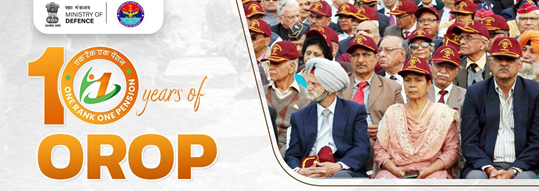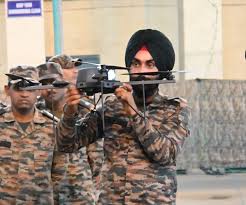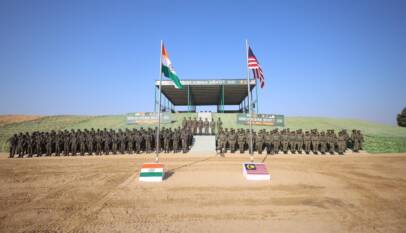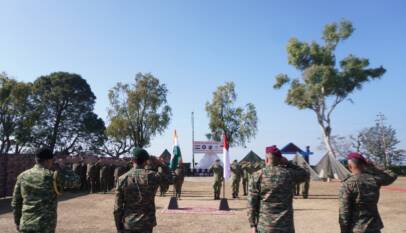One Rank One Pension (OROP) in India
A Landmark Initiative Celebrating 10 Years of Tribute to the Nation’s Heroes
On this day, One Rank One Pension was implemented. This was a tribute to the courage and sacrifices of our veterans and ex-service personnel who dedicate their lives to protecting our nation. The decision to implement OROP was a significant step towards addressing this long-standing demand and reaffirming our nation’s gratitude to our heroes.
-PM Narendra Modi
In a historic move to address long-standing disparities in pension benefits, India launched the One Rank One Pension (OROP) scheme, a decision that would change the lives of its military veterans. For years, veterans had fought not just on the battlefield, but also for equal recognition in their post-service lives, particularly when it came to pension benefits. With the introduction of OROP, the government took a bold step to ensure that soldiers who had served the nation with unwavering dedication would be treated fairly.
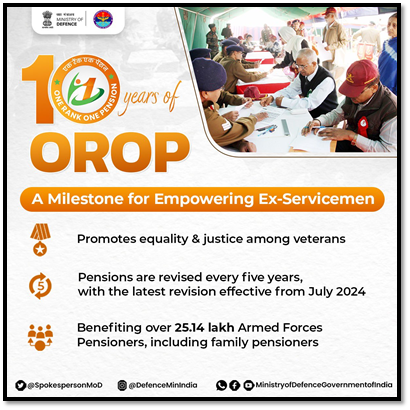
This initiative marked a momentous commitment to honor the sacrifices and service of those who had protected the country, promising them the respect and financial security they deserved.
As OROP completes the 10 years in 2024, it is essential to reflect on the immense benefits the scheme has brought to the armed forces community. The initiative has not only bridged the pension gap between current and past retirees but also reinforced the nation’s dedication to the well-being of its veterans. By bringing equity and fairness to pensionary benefits, OROP has played a crucial role in fortifying the bond between the Indian government and its military personnel.
The introduction of OROP has proven to be a game-changer for lakh of ex-servicemen and their families, ensuring that military personnel are treated with the respect they deserve throughout their post-retirement lives.
Overview of One Rank One Pension
At its core, One Rank One Pension (OROP) is a simple yet profound idea: that military personnel retiring in the same rank and with the same length of service should receive the same pension, regardless of their date of retirement. The principle addresses the disparity in pension benefits faced by former soldiers due to inflation, changes in pay scales, and the evolving nature of service conditions over time.
The scheme directly benefits the ex-servicemen and their families by ensuring that the pension gap between current and retired personnel is bridged periodically. The successful implementation of OROP in 2014 was not only a policy shift but a significant gesture of the government’s gratitude and respect towards those who served the nation.
Key Features of the OROP Scheme
The OROP order issued by the government on November 7, 2015, brought into effect a uniform pension system for all retired defense personnel, ensuring that the same rank with the same length of service would get equal pension benefits. The policy’s primary elements include:
- Re-fixation of Pensions: The pension of all past pensioners is re-fixed based on the pensions of personnel who retired in 2013, starting from July 1, 2014. This created a new benchmark for pensions, with all retirees getting equal benefits for their service.
- Periodic Revision: The pension is to be re-fixed every five years, ensuring that it continues to reflect changes in the pay and pension structure.
- Arrears Payments: Arrears of pension were to be paid in equal half-yearly installments, although the arrears for family pensioners and gallantry awardees were paid in a single installment.
- Safeguarding Above-Average Pension: For personnel drawing pensions higher than the average, their pensions are protected, ensuring that they do not lose out on the benefits of OROP.
- Inclusive of All Ex-Servicemen: The order covered all personnel who retired up to June 30, 2014, and provided a robust framework for revising pensions for all ranks, including family pensioners.
Addressing a Long-Standing Demand
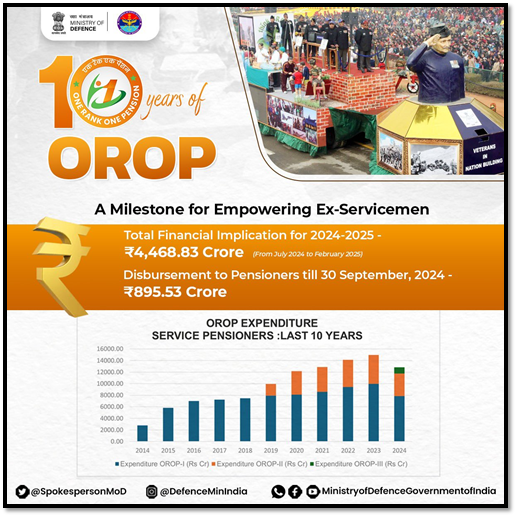
The demand for One Rank One Pension (OROP) had been a longstanding issue, lingering for over 40 years. Several government committees and commissions had examined the matter, but each time, the proposal was dismissed, mainly due to financial constraints and administrative complexities. The 3rd Central Pay Commission was the first to address the issue in a comprehensive way, recommending weightages in qualifying service for pensions. Over the years, committees like the K.P. Singh Dev Committee (1984) and the Sharad Pawar Committee (1991) also studied the matter but failed to offer a definitive solution. Despite these setbacks, the demand remained persistent, with the Standing Committee on Defence and other forums continuing to advocate for its implementation.
By the time of the 16th Lok Sabha and under the leadership of Prime Minister Narendra Modi, the government decided to honor the demands of ex-servicemen. The 2014 Budget allocated ₹1,000 crore for its implementation, and after extensive consultations, the Government Order was passed on November 7, 2015, covering all personnel who had retired until June 30, 2014.
Impact on Veterans and Their Families
The OROP scheme has benefitted over 25 lakh veterans and their families, bringing much-needed financial security to the ex-servicemen community. The scheme has not only improved the standard of living for retired military personnel but has also ensured greater dignity for their service to the nation. For many veterans, this was a long-awaited recognition of their contributions, bridging the gap between their sacrifices and the rewards they received post-retirement.
OROP has also had significant social and emotional value. It has contributed to a stronger bond between the Indian government and its military veterans, signaling the nation’s commitment to those who serve and protect its sovereignty. For the families of soldiers, many of whom live with the sacrifices of their loved ones, this policy brought a sense of fulfillment and acknowledgment.
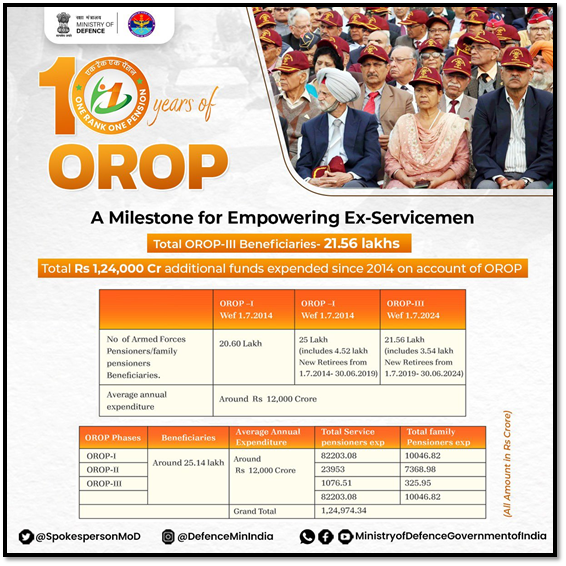
Looking Ahead: OROP’s Continued Relevance
On this day, when OROP was implemented a decade ago, it is important to recognize the continuing significance of this policy for the defense forces. As Prime Minister Modi emphasized, the OROP scheme is not just about pensions but is an affirmation of the government’s dedication to strengthening the armed forces and enhancing the welfare of those who have selflessly served the nation.
The re-fixation of pensions every five years ensures that the scheme remains adaptable to the evolving needs of ex-servicemen and their families. It also continues to be a powerful symbol of the government’s commitment to addressing the concerns of its military personnel, many of whom are at the forefront of protecting India’s borders and interests.
In conclusion, as we reflect on the impact of One Rank One Pension, it is clear that the policy has provided much-needed relief and recognition to India’s veterans. With continued refinements and periodic revisions, OROP promises to remain a cornerstone of the nation’s support for its armed forces, ensuring that the heroes who safeguard India’s sovereignty are honored, respected, and cared for long after they have hung up their uniforms.
Your Legal Rights When a Flight Is Delayed or Cancelled in India
New Delhi, Dec 5: With widespread flight disruptions continuing to affect air travel acros…

